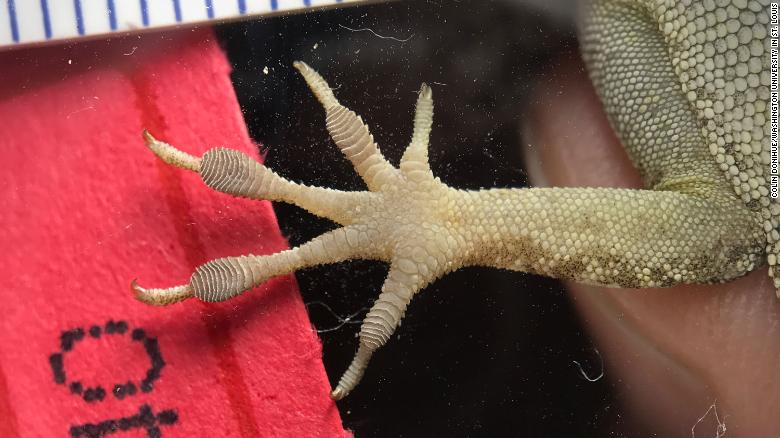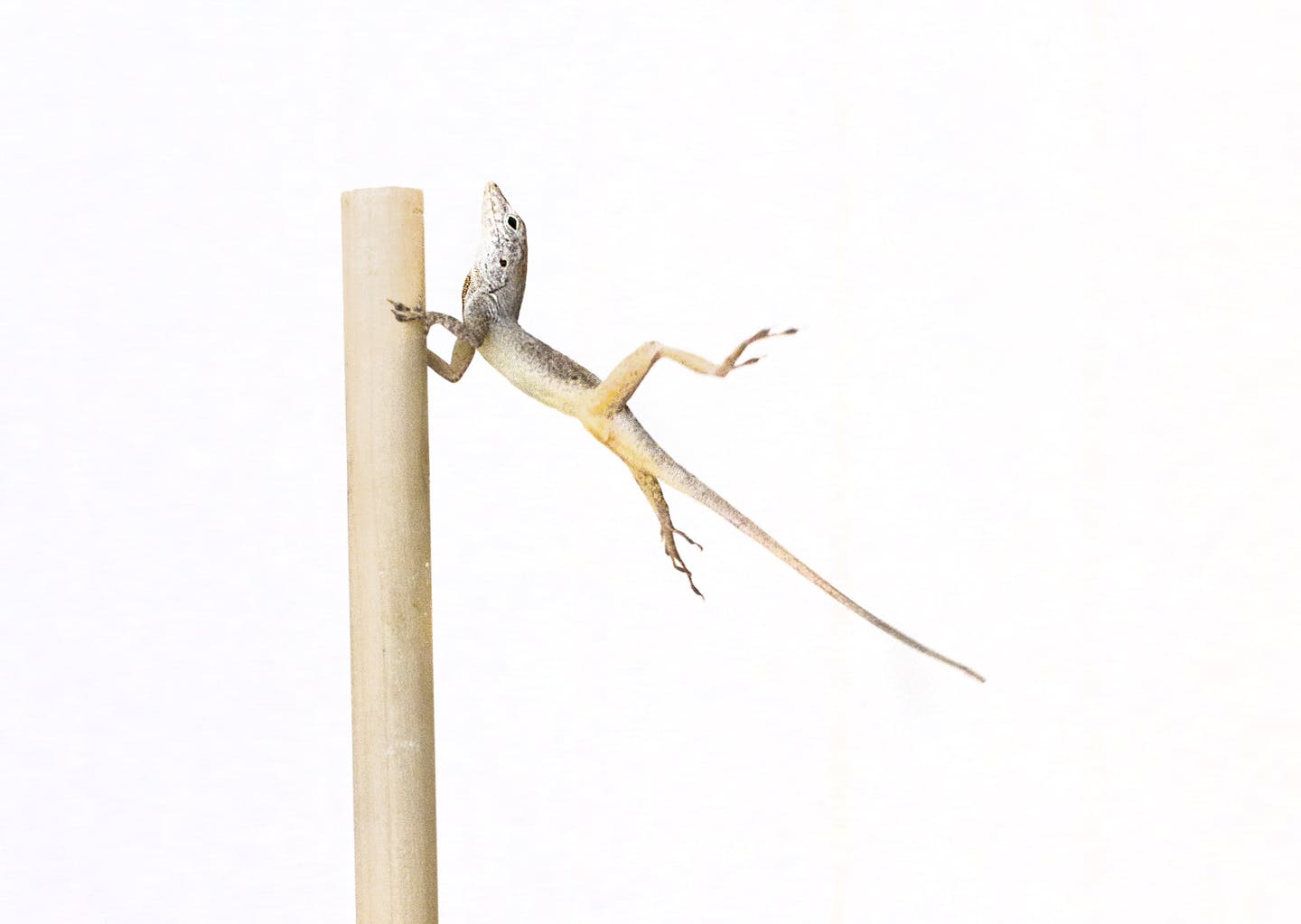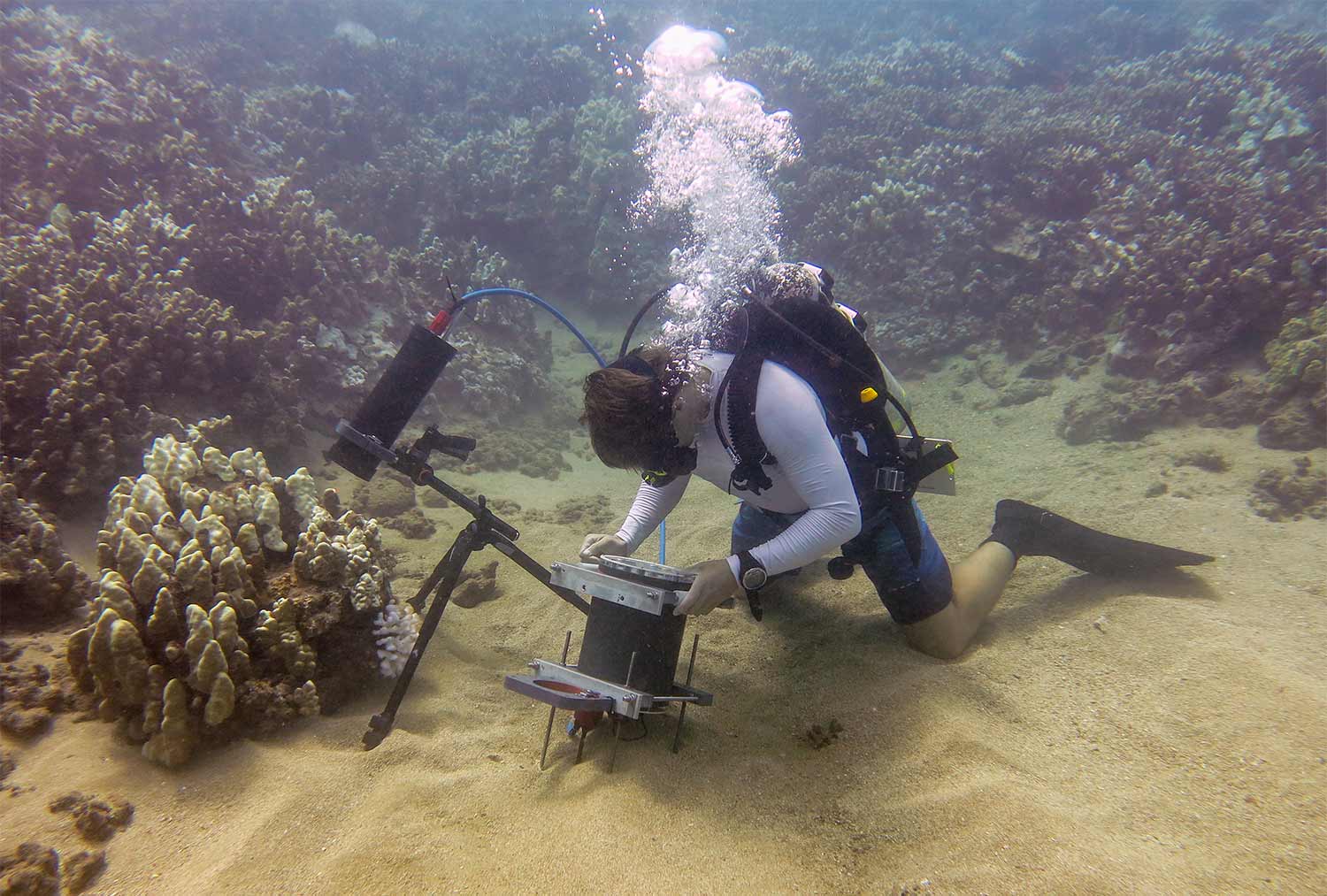Why did lizards suddenly develop larger toes? Blame it on hurricanes.
2020 has been a record-setting year, and not in a good way. From COVID-19 to murder hornets in the US, these aren’t the types of records anyone wants to set. But 2020 wasn’t done with us yet. This week, 2020 set the record for the most named tropical storms in a single season: Hurricane Iota was the 30th named storm. Iota also set a record for the latest date for a category 5 Atlantic hurricane.
Of all the likely outcomes of 2020, here’s one you may not have expected: Lizards are evolving and developing bigger feet. Huh?
Okay, maybe not bigger feet overall, but there is scientific evidence that natural selection is causing lizards in areas affected by hurricanes to develop larger toe pads. After all, they do need to have a good grip to survive the storms.
“Lizards can evolve adaptations that could make them more likely to survive certain effects of climate change,” states CNN. “That’s according to Colin Donihue, a post-doctoral fellow at Washington University in St. Louis, who authored a study published […] in the Proceedings of the National Academy of Science.”
“Lizards with bigger, grippier toe pads are more likely to survive after their islands are hit by hurricanes,” says Smithsonian Magazine.
2017 hurricane season
Donihue first studied the lizard populations on the Turks and Caicos Islands in 2017. Weeks after Donihue departed, Hurricane Irma hit the islands. Shortly after that, Hurricane Maria struck. Donihue returned in 2018 and discovered the lizards in the same regions he had visited in 2017 had notably larger toe pads. Their offspring also had larger toe pads. Natural selection in action.

Toe pads area was measured on the lizard species before and after the hurricane strikes. Image credit: Colin Donihue.
Analyzing 70 years of hurricane strikes
Next, the team from Washington University set out to determine if the effect they discovered on Turks and Caicos was widespread, both in terms of other locations and from other storms. They examined 188 lizard species on twelve different islands in the region, cataloging the sizes of their toe pads.
The scientists wrote a MATLAB program to find the dates and intensities of hurricanes in this region over the last 70 years. They imported hurricane track data from an archive and interpolated the data from the recorded 6-hour intervals to 15-minute intervals. This ensured that the count would include fast-moving hurricanes in the region. The MATLAB program counted the number of times the storms met a wind speed and distance threshold for each of the islands over the 70 years.

Each point represents one of the 188 species in the study, mapped by toepad area for both the front legs (b) and hind legs (c) against hurricane intensity. Image credit: Donihue et. al.
“Over the past 70 years of hurricane data, the pattern stood out: Larger toe pads were correlated with more severe hurricanes,” reports CNN.
This study found both a short-term effect on a species of lizard and long-term effects across multiple species related to hurricanes. The study authors note that hurricanes likely affect many species of plants and animals. And the species need the ability to adapt as our planet sees more record-setting hurricane seasons.
“Animals and plants may indeed need the added tropical resilience, as the frequency of these climate events increases,” Donihue states. “As hurricanes become more severe due to climate change, these extreme climate events may have a much larger impact on the evolutionary trajectory of the affected ecological communities.”


:focal(303x441:304x442)/https://public-media.si-cdn.com/filer/2d/1c/2d1c077c-8f84-4734-ba62-f7ac1b23c6cb/cropped_229877.jpg)








Comments
To leave a comment, please click here to sign in to your MathWorks Account or create a new one.